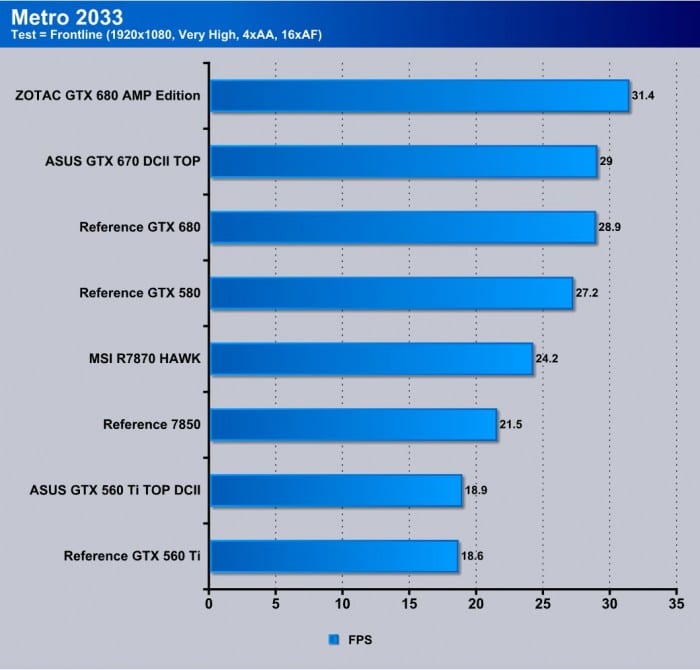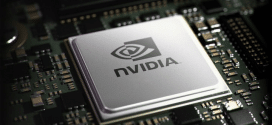ASUS GTX 560 Ti 2GB DirectCUII
Testing & Methodology

We’ve expanded our testing suite considerably since the X79 chipset release, and will continue to use the same methods for most of the motherboards and CPU’s we test. In the interests of thoroughness and accurate results, we run each test at least three times, and some tests more than that. We average the total of all the tests from each benchmark then report the average here.
The OS we use is Windows 7 Pro 64bit with all patches and updates applied. We also use the latest drivers available for the motherboard and any devices attached to the computer. We do not disable background tasks or tweak the OS or system in any way. We turn off drive indexing and daily defragging. We also turn off Prefetch and Superfetch. This is not an attempt to produce bigger benchmark numbers. Drive indexing and defragging can interfere with testing and produce confusing numbers. If a test were to be run while a drive was being indexed or defragged, and then the same test was later run when these processes were off, the two results would be contradictory and erroneous. As we cannot control when defragging and indexing occur precisely enough to guarantee that they won’t interfere with testing, we opt to disable the features entirely.
Prefetch tries to predict what users will load the next time they boot the machine by caching the relevant files and storing them for later use. We want to learn how the program runs without any of the files being cached, and we disable it so that each test run we do not have to clear Prefetch to get accurate numbers. Lastly we disable Superfetch. Superfetch loads often-used programs into the memory. It is one of the reasons that Windows occupies so much memory. Vista fills the memory in an attempt to predict what users will load. Having one test run with files cached, and another test run with the files un-cached would result in inaccurate numbers. Again, since we can’t control its timings so precisely, it we turn it off. Because these four features can potentially interfere with benchmarking, and and are out of our control, we disable them. We do not disable anything else.
Test Rig
| Test Rig | |
| Case | Thermaltake Level 10 GT |
| CPU | Intel Core i7-3770K/Intel Core i7-2600K |
| Motherboard | ASUS Maximus V Gene |
| Ram | 16GbpsB Patriot Viper Xtreme 2400MHz + |
| CPU Cooler | Swiftech H20-220 Edge |
| Hard Drive | Western Digital Velociraptor 300GB |
| SSD | Intel 510 series SATA III 120GB |
| Optical | ASUS BD-ROM |
| GPU | ASUS GTX 560 Ti DCII 2GB |
| Additional Cards |
N/A |
| PSU | Thermaltake Toughpower Grand 1200W |
| Mouse | Tt eSPORTS Black gaming mouse |
| Keyboard | Tt eSPORTS Meka G1 mechanical gaming keyboard |
Test Suite
We will use the following applications to test the performance of the graphics card.
Synthetic Benchmarks & Games
| Benchmarks |
|---|
| 3DMark11 |
| Aliens vs. Predator |
| Batman: Arkham City |
| Dirt 3 |
| Metro 2033 |
Overclocking

The GTX 560 Ti is rather hit and miss in our experience, and this one comes out of the box pre overclocked at 900MHz but upon overclocking I was able to pull a bit more out of it for a top GPU clock of 965MHz. This is not the absolute max as I got over 955MHz but it is not what I would consider completely stable. This is definitely not the worst 560 Ti GPU I have had to date but its not the best either.
Memory was not too bad at just under 1200 at 1195MHz but that was really pushing it to the edge. Nonetheless, it remained completely stable at that speed. Not really too bad when you consider that this is twice the framebuffer as a standard 560 Ti card.
In order to ensure no system bottleneck we clocked the CPU to 4.6GHz to ensure there is no reason the system will slow down the cards performance at all.
Some may ask why we chose the mainstream Z77 system and we can explain. Up until recent the X79 enthusiasts platform does not really support PCIe Gen 3 on the Nvidia 600 series GPU’s and come to find out it is due to the inherent instability many have seen with the X79 platform with Gen 3 products. This is why Nvidia has been hesitant to enable it, and now there is a workaround via registry to get it working but in order to ensure best possible testing scenarios we have stuck to the natively supported Z77 platform.
Important note: Overclocking can cause component failure. Please exercise caution when attempting any level of overclock on system components.
Temperatures

The temperatures were recorded with full loaded Heaven benchmark looping for over 30 minutes or longer depending how long it took for the card to level out in temps and sat at a plateau for more than 10 minutes.
| GPU Temperatures | Temperature (Idle/Load) |
| ASUS GTX560 Ti DCII TOP OC | 32C/64C |
| ASUS GTX560 Ti DCII TOP | 32C/62C |
The cooling efficiency of the cooler can be seen as it keeps the card nice and cool, one thing to note is that if setting the fan speed to highest setting it will definitely be heard. Also under load the card is kept warm but fan speed does ramp up pretty quick which can definitely be heard but not enough that I could see it being an issue in a chassis.
Real world/Gaming Benchmarks
3DMARK 11

3DMark 11 is the newest in Futuremark’s suite of benchmarking utilities. Its a fully capable DirectX11 benchmark which also stresses and analyzes the system performance as a whole to simulate a heavy rendering environment such as a high end game or other app the end user may run. This benchmark was run with Performance settings 5 times and all runs were averaged for the result below.
Here we see the 560 Ti takes a step ahead of the reference 560 and it is likely from both the overclock and the larger frambuffer.
Aliens Vs Predator
Aliens Vs Predator is a quite demanding game and overall just a cool title so we had some fun running this one through its paces.
Here we see a small jump ahead of the reference 560 Ti but playable nonetheless at HD resolution.
Metro 2033

Metro 2033 is the new Crysis for now, as most single cards even from the enthusiasts side simply cannot handle it with everything enabled. The 2GB 560 Ti is no exception here as it simply is not framebuffer holding this game back it is pure need or thirst for GPU power.
Batman: Arkham City
Batman is a fun game, entertaining and with some cool PhysX effects. In this game the 2GB model pulls a little over 2 FPS higher at HD resolutions.
Dirt 3
Dirt 3 is not so much demanding as you see here the 560 Ti easily knocks out numbers well over 100 FPS, and the 2GB card gets a nice bump here turning ion over 5FPS higher.
 Bjorn3D.com Bjorn3d.com – Satisfying Your Daily Tech Cravings Since 1996
Bjorn3D.com Bjorn3d.com – Satisfying Your Daily Tech Cravings Since 1996













Hello, I installed this 2 gb card to my new i5 3570k computer, when I play Prototype 2, The FPS goes down to under 10 in medium video set up mode. I dont know why?, I have trusted that card and ı bought it, Surprisingly ı was shocked when ı saw the fps,
You could be bottle-necking, or overheating. I would run memtest, then upgrade your drivers
If it’s only happening in Prototype 2, then I would reinstall, or check your settings